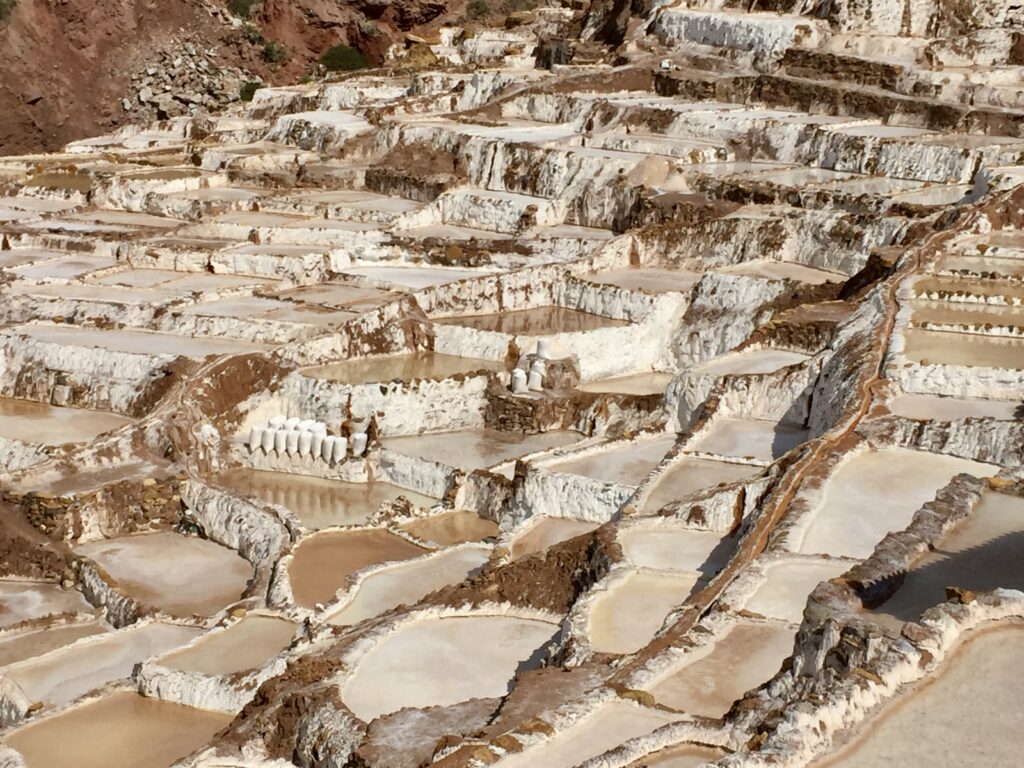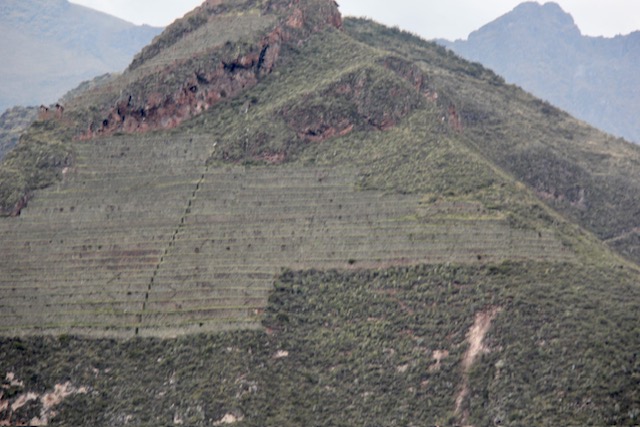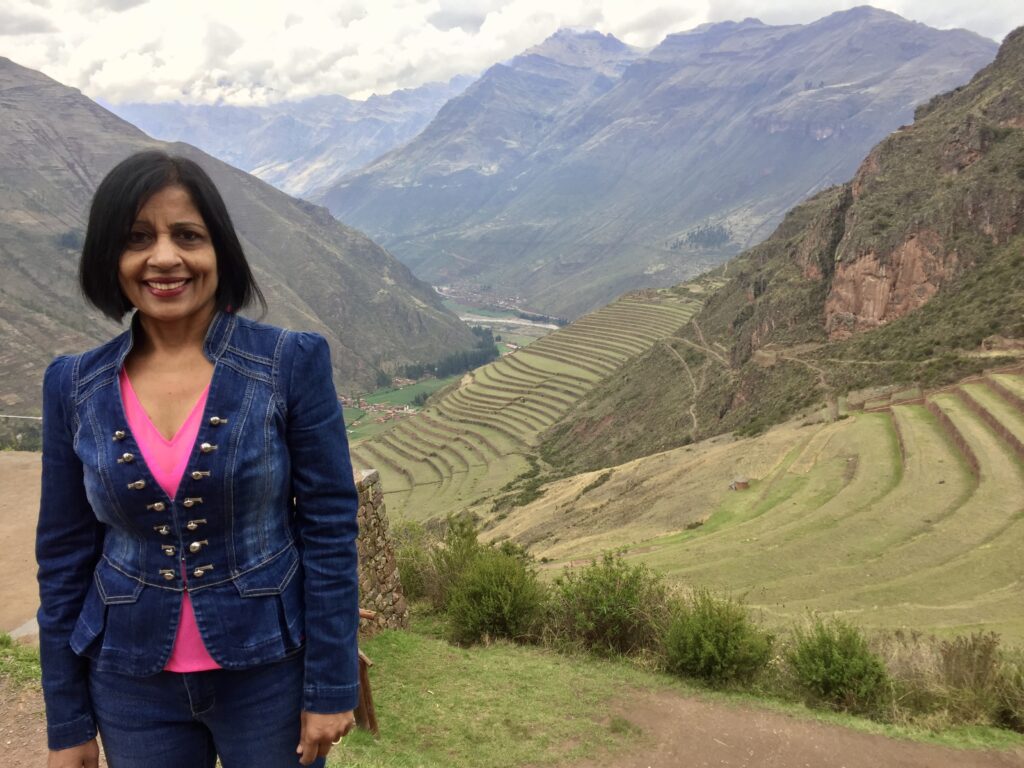Sacred Valley – Together with Cusco, the Sacred Valley is a getaway to Machu Picchu. Tucked between Cusco and Machu Picchu, the Sacred Valley has a slightly warmer climate, some ancient fortresses, and villages steeped in age-old traditions. We visited some of the villages and ruins on our Viator guided tour before taking the train to Machu Picchu in the evening.

Salt Mines of Maras – The Salineras de Maras, or Maras salt mines, date back to pre-Inca times. They are also the largest prehispanic salt mines in Peru. Historians know little about exactly who created the mines and when. However, archeologists have found evidence of civilizations in Maras since around 700 BCE. Of course, when the Inca came to power, they oversaw the area’s salt production. There are approximately 4,500 salt ponds stacked on the hill next to the town of Maras, all owned by local families. Each pond measures about 13 square feet (4 square meters) made with stone and mud mortar walls. Individual ponds belong to families living in the community and are passed down from generation to generation. UNESCO is currently considering Maras as a possible World Heritage Site.



Moray archaeological site – Moray is another archeological site near Maras. The site contains Inca ruins, of several terraced circular depressions, the largest of which is approximately 30 m (98 ft) deep. As with many other Inca sites, it also has an irrigation system. The purpose of these depressions is uncertain, but their depth, design, and orientation with respect to wind and sun creates a temperature difference of as much as 5 °C (9 °F) between the top and the bottom.


Pisac – Pisac is known for its ruins and market. The road from Cusco to Pisac leads through a mountain pass and drops down into the Sacred Valley. You can view the Pisac terraces straight on from a viewpoint before you arrive at the ruins.

The ancient Inca archaeological site at Pisac perched high above town. Just after passing through the entrance gate, you will find an impressive 4-tier, rounded stone building to your right called the Quantas Raqay or the Upper Urban Zone. This was the residential and military structure for watching over the northeastern entrance to the complex.

After you walk around the Quantas Raqay ruins to the edge of the platform, an incredible view of the Pisac Archaeological park will open up.






Ollantaytambo – During the Inca Empire, Ollantaytambo was the royal estate of Emperor Pachacuti, who conquered the region, and built the town and a ceremonial center. At the time of the Spanish conquest of Peru, it served as a stronghold for Manco Inca Yupanqui, leader of the Inca resistance. The well preserved archaeological site at Ollantaytambo is built along the slopes of a narrow mountainside. Stone steps up a terraced-laced hillside lead to the impressive main complex. The panoramic views at the top are a photographer’s dream!





The train station in Ollantaytambo is an important transit point for travelers taking the train to Machu Picchu. Since there’s not a direct road that goes all the way to the famous citadel, Ollantaytambo is quite literally the end of the road in the Sacred Valley. It is also located en route to one of the starting points for the Inca Trail.
Urubamba – The town of Urubamba is surrounded by the Andean peak in the heart of Sacred Valley. The main appeal here is the natural beauty surrounding this place. Many travelers pass through Urubamba and stop for lunch at one of the towns excellent restaurants. If you have extra time, walk to the town plaza and then visit the indoor Urubamba Market just two blocks away.
